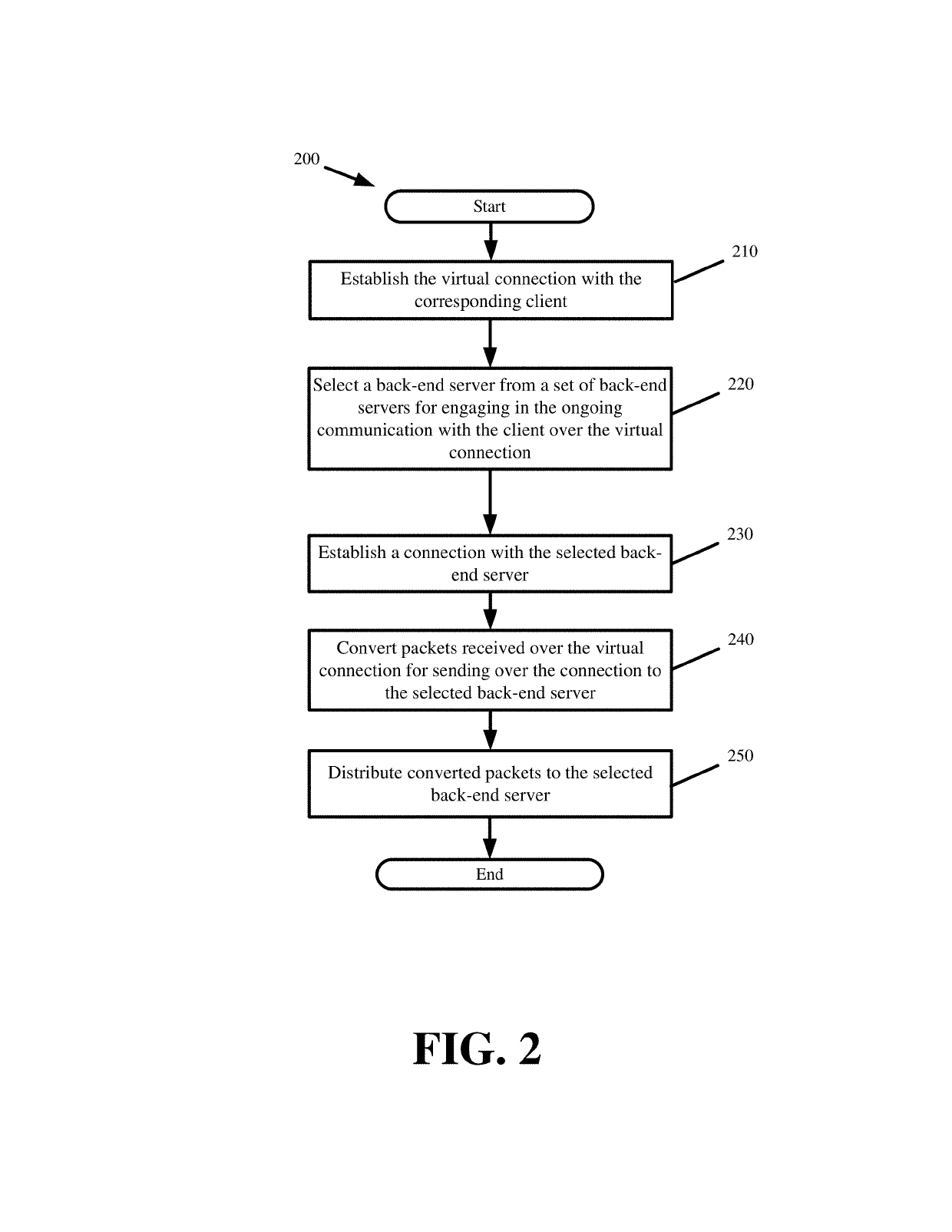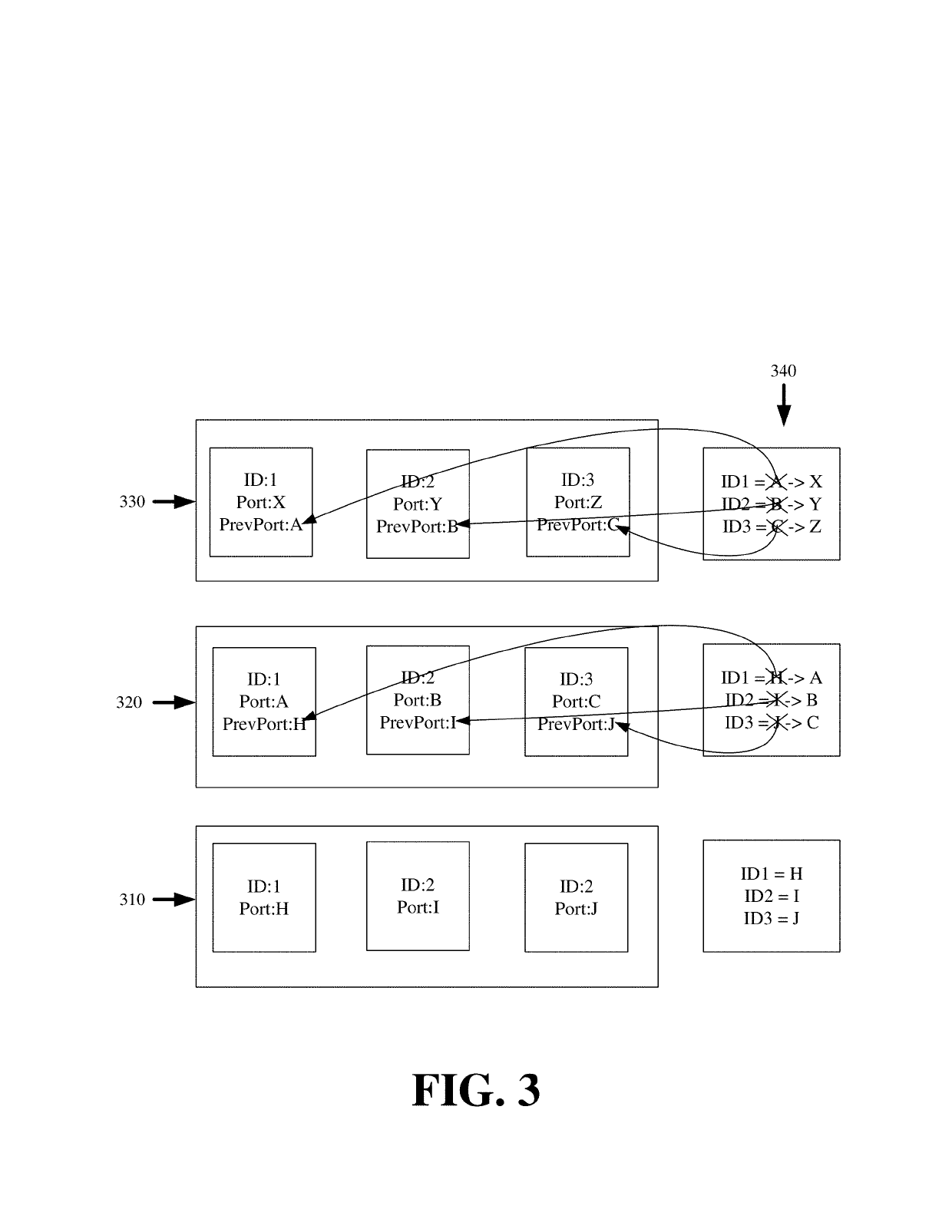Load Balancing of Connectionless Traffic
a connectionless and traffic technology, applied in the direction of digital transmission, data switching network, electrical apparatus, etc., can solve the problem that the qos is poorly suited to load balanced environment implementation
- Summary
- Abstract
- Description
- Claims
- Application Information
AI Technical Summary
Benefits of technology
Problems solved by technology
Method used
Image
Examples
Embodiment Construction
[0017]Disclosed are systems and methods for load balancing connectionless traffic. A load balancing appliance serves as a point of ingress for connectionless network data traffic and provides a persistent distribution of the connectionless traffic, including User Datagram Protocol (UDP) based traffic and Quick Internet UDP Connections (QUIC) traffic, across two or more back-end servers. In some embodiments, the load balancing appliance is a load balancer, director, front-end server, or other server performing a dual load balancing and content distribution role. In other words, the load balancing appliance can directly respond to a first subset of the received connectionless data traffic while distributing a second subset of the received connectionless data traffic to other servers for response.
[0018]FIG. 1 conceptually illustrates load balancing of connectionless traffic in accordance with some embodiments. The figure illustrates different clients 110, the load balancing appliance 1...
PUM
 Login to View More
Login to View More Abstract
Description
Claims
Application Information
 Login to View More
Login to View More - R&D
- Intellectual Property
- Life Sciences
- Materials
- Tech Scout
- Unparalleled Data Quality
- Higher Quality Content
- 60% Fewer Hallucinations
Browse by: Latest US Patents, China's latest patents, Technical Efficacy Thesaurus, Application Domain, Technology Topic, Popular Technical Reports.
© 2025 PatSnap. All rights reserved.Legal|Privacy policy|Modern Slavery Act Transparency Statement|Sitemap|About US| Contact US: help@patsnap.com



